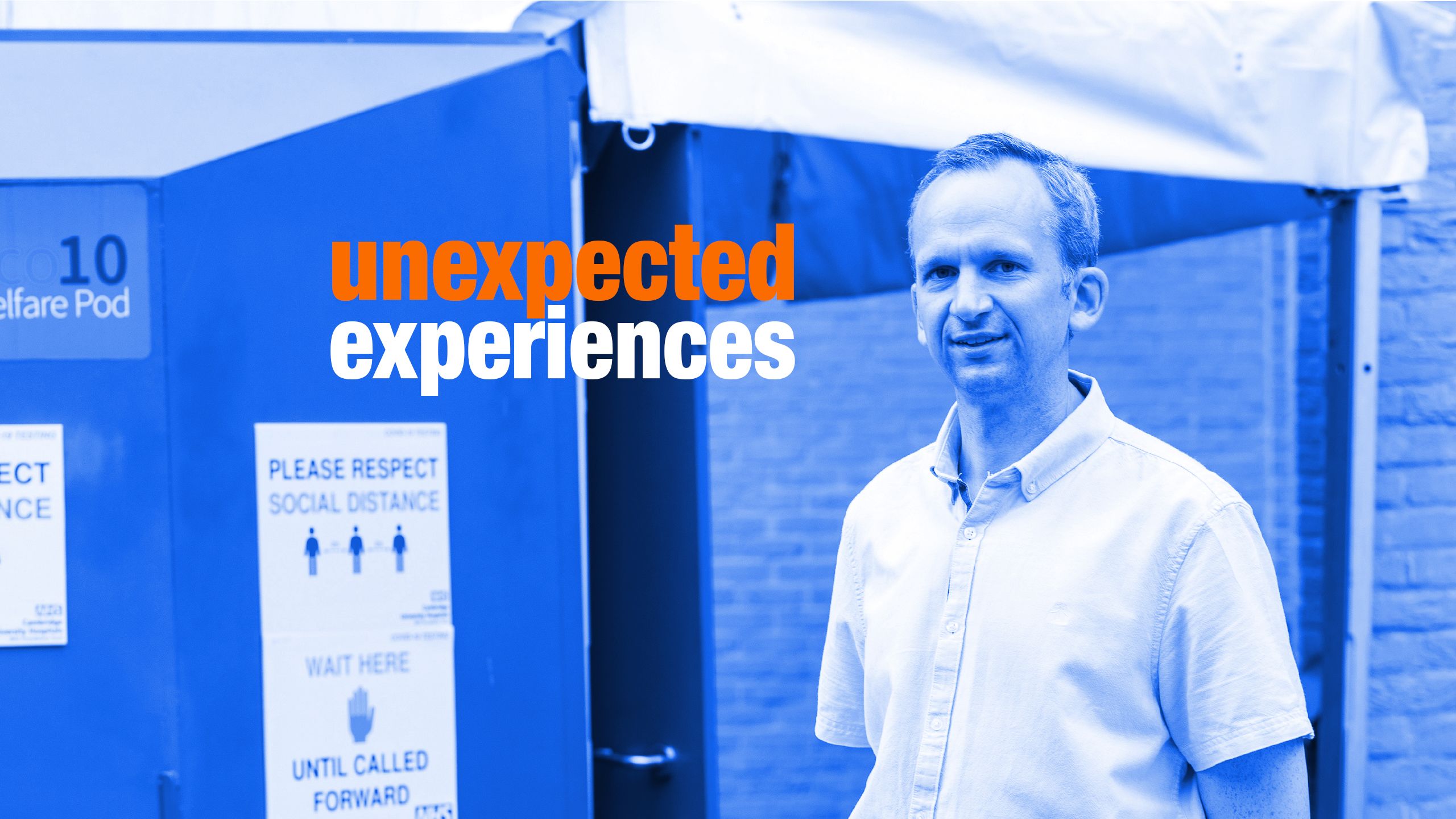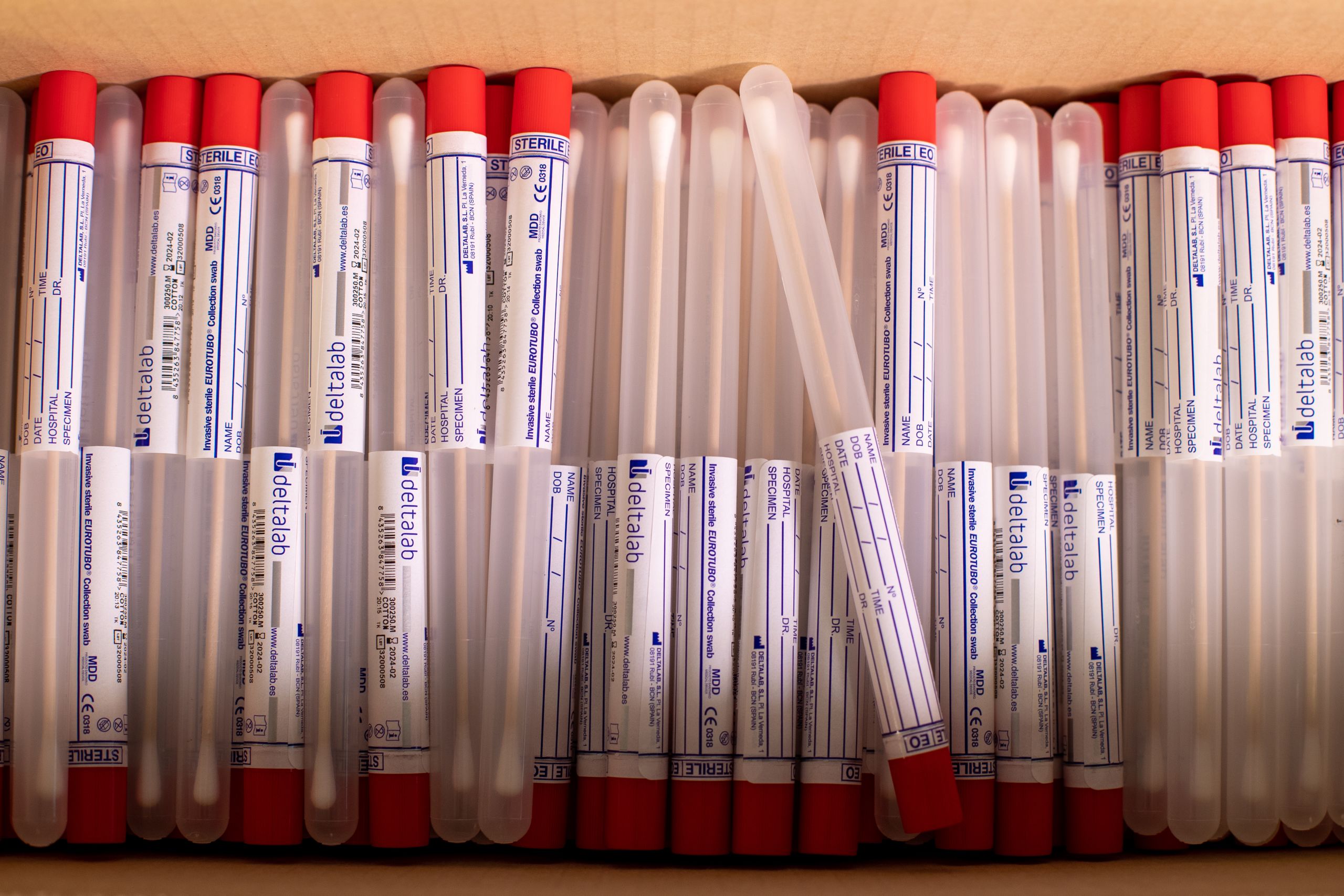
COVID-19 has cast a shadow that few of us could ever have imagined. Around the world, families are grieving, lives have been put on hold, finances are squeezed. The crisis is not yet over, but hopeful stories are emerging.
In a new series, we hear how individuals across the University community have coped with unexpected experiences, found new opportunities and are looking to the future.
When infectious diseases expert Mike Weekes realised he and colleagues had the know-how to help protect staff, patients and students in a pandemic, they set up a unique testing facility – the first of its kind, they believe, in a UK university – and now a central part of a new public health campaign, Stay Safe Cambridge Uni.
My lab in Cambridge Institute for Medical Research had just finished a study of how a virus that infects up to 90% of us is able to ‘hide’ for a lifetime in most people, yet causes devastating disease in those with compromised immune systems such as transplant recipients and unborn babies.
Most people won’t even know they are infected with human cytomegalovirus, partly because it has evolved multiple different strategies to ‘turn off’ our immunity. We hope our findings will eventually lead to new treatments.
Then along came SARS-CoV-2. Within a matter of weeks, students had gone home, most University facilities including my lab had shut, and admissions of patients with COVID into Cambridge University Hospitals (CUH) – which includes Addenbrooke’s Hospital – were rising.

So what could we do?
One of the clearest initial priorities was to protect staff and patients from becoming infected by SARS-CoV-2 within CUH, which at the time was the place with the greatest number of infected people in Cambridgeshire. And one of the best ways to do this, apart from social distancing and promoting wearing of masks, was to test staff for the virus as frequently as possible.
However, national testing programmes were in their infancy and capacity was severely limited. At the time, only patients could get a test.
With a large team of people from a wide diversity of disciplines, we set out to devise our own testing programme for hospital staff. One of my colleagues, Steve Baker, converted his whole University lab into a COVID testing facility. I got moving with a team setting up the logistics of sampling.
We moved two ‘Pods’ into the grounds of Addenbrooke’s Hospital, where staff with potential COVID symptoms could come and be swabbed. Then we expanded the testing programme so that packs of swabs would be taken to different wards each day and ‘asymptomatic’ staff at the hospital could also get tested.
Most recently, with University staff and students coming back to work in the collegiate University, we set up a dedicated testing scheme for symptomatic University staff, with pods at Addenbrooke’s and outside the Department of Engineering’s Dyson building.
When students return, we plan to expand the scheme to cover them so that rapid-turnaround symptomatic testing is available for everyone at colleges and in the wider University.
"With a large team of people from a wide diversity of disciplines, we set out to devise our own testing programme for hospital staff. One of my colleagues, Steve Baker, converted his whole University lab into a COVID testing facility. I got moving with a team setting up the logistics of sampling."
At the height of the pandemic, one of our biggest surprises was that 3% of CUH staff reporting fit for duty tested positive for SARS-CoV-2. On closer questioning, about half admitted to vague symptoms that they had dismissed as inconsequential, and a quarter confirmed remaining symptom-free throughout.
This really drove home why regular mass screening for SARS-CoV-2 combined with an effective track and trace system is so vital to combat this virus. Infected people become infectious two days prior to the onset of symptoms, and some never develop symptoms at all. The major reason why we have a pandemic is that people transmit the SARS-CoV-2 virus without knowing they have it.
We’ve been adapting our testing programme as a result of these findings, routinely testing anyone with even minor ‘flu-like symptoms, such as muscle aches, hoarse voice and sore throat as well as people with ‘major’ symptoms such as fever, cough or loss of sense of smell or taste.
Pleasingly, the most recent data from CUH has been really encouraging. Alongside a decline to near zero in admissions of patients with COVID, the proportion of both asymptomatic and symptomatic staff testing positive has declined very rapidly. Only one person tested positive in July!
Of course this doesn’t mean the virus has gone away, so we’re constantly expanding testing capacity to be ready for a second peak. The facility is now part of a wider public health campaign that recently launched across the University to keep everyone as safe as possible.
Lab and hospital life have now started to return to normal. Members of my lab are coming back to work, albeit distanced, with masks on and home working where possible.
I’m now keeping the testing programme ticking over while running the lab – and finding that there’s quite a contrast between the intensely practical role of testing and the sphere of experimental science. The hospital only has a very few patients with COVID and has resumed most normal services.
Going forward, the key will be for us all to work together over the next few months to protect each other from the virus: masks, distance, test!
Words: Mike Weekes
Design: Zoe Smith
Photography/Filming: Nick Saffell /Lloyd Mann
Typography: Balvir Friers
Series Editor: Louise Walsh

